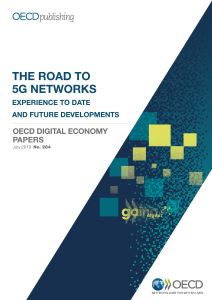Join getAbstract to access the summary!

Join getAbstract to access the summary!
Working Party on Communication Infrastructure and Services Policy (WPCISP)
The Road to 5G Networks
Experience to date and future developments
OECD, 2019
What's inside?
The fifth generation of wireless networks (5G) will be both evolutionary and revolutionary.
Recommendation
The much-anticipated 5G revolution is imminent. Stakeholders worldwide envision a world that is better connected, with faster speeds and better capacity for the massive data required for innovation. With network slicing, beamforming and massive MIMO, 5G represents a paradigm shift, with the Internet of Things (IoT) as its driver. Member countries of the OECD will scale their infrastructure with investments in small cell distribution and backhaul connectivity to promote intensive growth in the IoT. By 2035 the world economy should feel the impact in key sectors.
Summary
About the Author
“The Road to 5G Networks” was approved by the Committee on Digital Economy Policy on 3 May 2019 and was prepared for publication by the OECD Secretariat. It is a contribution to the OECD Going Digital project. This report was drafted by Alexia Gonzalez Fanfalone with contributions by Sam Paltridge from the OECD Secretariat and WPCISP delegates regarding their country experiences. It was prepared under the supervision of Sam Paltridge and Verena Weber.


















Comment on this summary